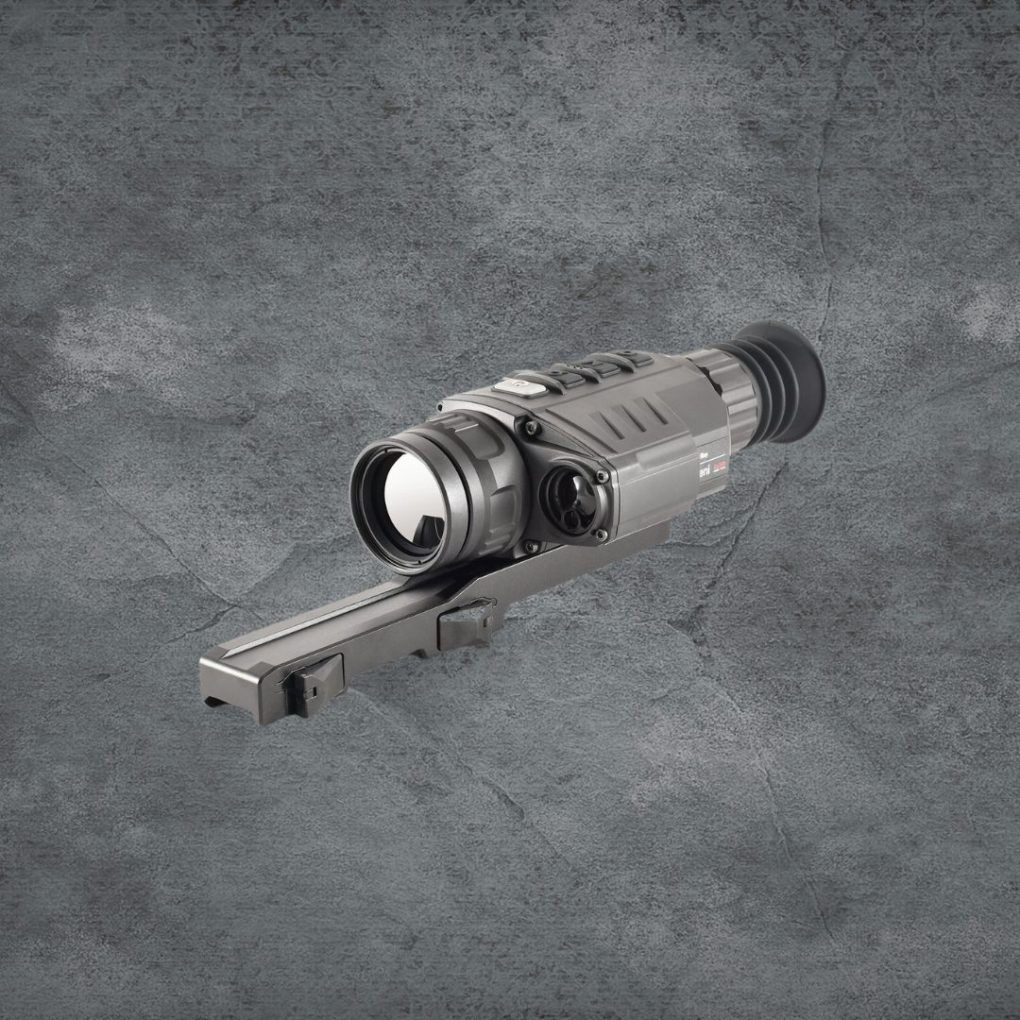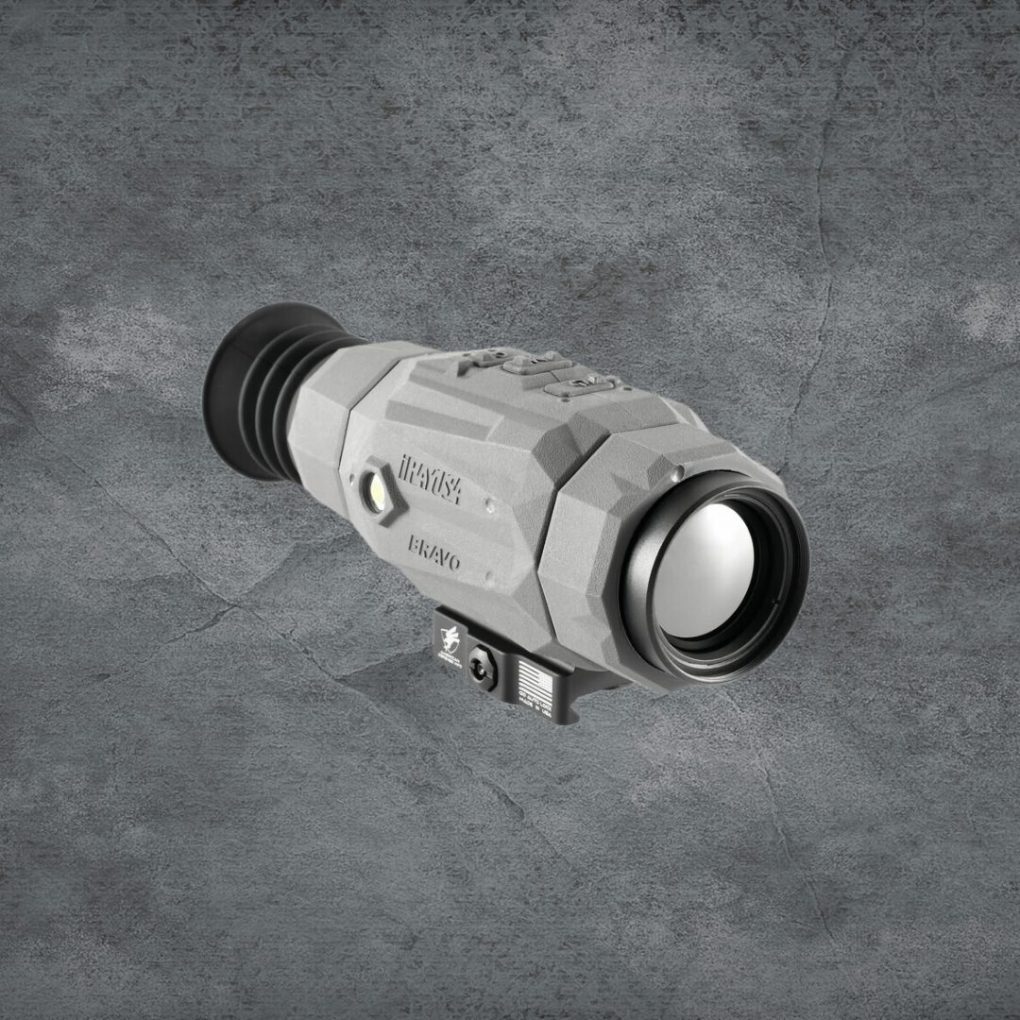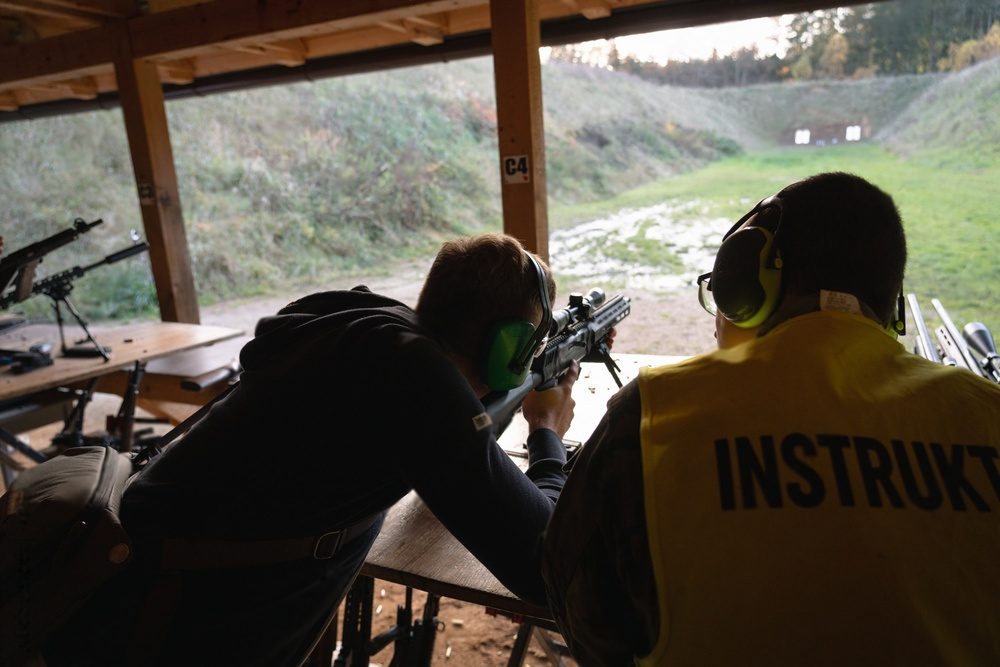You’ve invested in an ACOG scope, now it’s time to harness its full potential.
With precise reticle options, expert mounting, and meticulous zeroing, you’ll dominate competitive shooting.
Master eye relief, exploit the Bullet Drop Compensator (BDC) for long-range accuracy, and tweak illumination for clarity.
Incorporate tailored drills to snap to targets faster.
By maintaining your gear, you’ll ensure enduring precision.
Ready to sharpen your skills? Let’s dive into optimizing your ACOG scope for peak performance.
→Other articles by Steele Industries!
–https://steeleindustries.com/pvs-31-vs-pvs-14-a-detailed-comparison-of-night-vision-goggles/
–https://steeleindustries.com/understanding-the-different-types-of-clip-on-night-vision-devices/
–https://steeleindustries.com/unveiling-the-benefits-of-the-nox-thermal-scope-series/
–https://steeleindustries.com/what-you-need-to-know-about-thermal-imaging/
– For more reading, visit our blog!
Contact:
-Call us at (800) 674-7302
-E-mail: sales@steeleindinc.com
–Facebook/ steeleindustriesinc
–Instagram/steeleindustriesinc
Key Takeaways
- Understanding the different ACOG reticle options, such as the Chevron and Crosshair, can help improve aiming accuracy at different distances.
- Proper mounting techniques, including ensuring proper eye relief and level reticle alignment, can enhance stability and accuracy.
- Mastering eye relief and position, along with consistent cheek weld and head position, can prevent parallax errors and improve clarity of the reticle.
- Fine-tuning zeroing adjustments, including calibrating the ACOG scope for specific engagement distances and adjusting for environmental variables, is essential for pinpoint precision in competitive shooting.
Understanding ACOG Reticle Options
During your quest for precision in competitive shooting, it’s crucial to understand the various ACOG reticle options available to you. Each reticle pattern offers a unique advantage for specific scenarios and ballistic performances.
The classic Chevron reticle, for instance, provides an instantly recognizable aiming point that’s particularly effective for rapid target acquisition. Its tip allows for precise shot placement at distance, while the wider base aids in quicker engagements at closer ranges.
Similarly, the Crosshair reticle offers a fine aiming point, beneficial for shooters focusing on accuracy over speed. It’s calibrated for bullet drop compensation, enabling you to make adjustments for long-range shots without manual input.
You’ll find that mastering these reticle subtleties can significantly enhance your targeting efficiency under competitive conditions.
Optimal Mounting Techniques
After selecting the right ACOG reticle, you’ll need to master optimal mounting techniques to ensure your scope’s performance matches your precision goals. Precise alignment and secure fitting are paramount. Here’s how to achieve this:
- Ensure Proper Eye Relief: Position the ACOG so you have a full field of view without strain. Typically, this is about 1.5 to 2 inches from your eye when you’re in a relaxed shooting stance.
- Level the Reticle: Use a reliable leveling tool to align the reticle horizontally with your firearm. This prevents canting errors that could skew your shots.
- Torque to Specification: Secure the mounting screws with the recommended torque settings to avoid over-tightening or under-tightening, which can compromise stability and accuracy.
Mastering Eye Relief and Position
To maximize your ACOG scope’s accuracy, you’ll need to master the eye relief and position that best suit your shooting style. Eye relief is the distance from your eye to the scope’s eyepiece, which is crucial for maintaining a full field of view without vignetting. ACOG scopes typically offer a fixed eye relief, so it’s imperative to set your mounting to align with this distance. Consistency is key.
Ensure your cheek weld is repeatable and your head position remains constant with each shot. Any deviation can cause parallax errors, impacting your shot’s precision. Fine-tune your positioning until the reticle appears sharp and clear, with the entire sight picture visible.
Diligent practice with these parameters in mind will refine your technique, augmenting your competitive edge.
Fine-Tuning Zeroing Adjustments
You’ll need to calibrate your ACOG scope accurately to the specific distances you’ll engage targets at during competition.
Adjust your windage and elevation settings meticulously to compensate for environmental variables.
Ensure your reticle is perfectly aligned for a reliable point of aim and a consistent point of impact.
Precise Distance Calibration
Why settle for approximate accuracy when fine-tuning your ACOG scope’s zeroing adjustments can give you the competitive edge? Achieving pinpoint precision is essential in competitive shooting, and meticulous distance calibration is the key to unlocking your ACOG’s full potential.
Here’s what you need to focus on:
- Ballistic Calibration: Match your ammunition’s ballistics to the scope’s reticle. This ensures that the bullet drop compensation (BDC) marks align with the actual trajectory of your rounds.
- Environmental Adjustment: Account for windage, elevation, and temperature. These factors can significantly affect bullet impact, especially at longer ranges.
- Regular Verification: Reconfirm zero after any changes to your setup or before an important match. Consistency is paramount for maintaining accuracy throughout the competition.
Windage and Elevation Tweaks
Fine-tuning your ACOG scope’s windage and elevation is a critical step to ensure every shot counts in competitive shooting.
After establishing a preliminary zero, you’ll need to make precise adjustments. For windage, rotate the scope’s adjustment knob—typically marked in minutes of angle (MOA) or milliradian (mrad)—to shift the point of impact left or right. One click usually equals a specific fraction of an inch at 100 yards, such as 1/4 MOA per click.
Similarly, adjust elevation to account for bullet drop; each click will raise or lower the point of impact. Always refer to your scope’s specifications for exact values.
Reticle Alignment Tips
Dial in your ACOG scope’s reticle alignment by making minor zeroing adjustments to ensure pinpoint accuracy during competitions. Precise alignment is critical for achieving top-tier performance in competitive shooting.
Here’s how to fine-tune your ACOG for optimal results:
- Verify Stability: Before adjusting, ensure your rifle is securely mounted in a vice or rests to eliminate human error.
- Adjust in Small Increments: Make adjustments in the smallest recommended increments, checking the impact after each change.
- Maintain Consistent Positioning: Keep a consistent cheek weld and eye relief with each shot to avoid parallax error.
Leveraging BDC for Distance Shooting
To optimize your ACOG scope for long-range engagements, you must master the Bullet Drop Compensator (BDC) reticle.
You’ll need to accurately estimate distances to your target, a skill that’s critical when applying BDC.
Furthermore, understanding windage compensation techniques ensures your precision isn’t compromised by environmental variables.
BDC Reticle Understanding
Understanding your ACOG scope’s Bullet Drop Compensator (BDC) reticle is crucial for accurately engaging targets at various distances in competitive shooting. The BDC reticle allows you to compensate for bullet drop effectively without manual adjustments. Here’s what you need to focus on:
- Calibration: Ensure your BDC is calibrated for your specific caliber and load; misalignment can lead to significant errors.
- Range Estimation: Master the use of reticle markings for range estimation to determine the correct holdover points.
- Practice: Regularly practice with your BDC reticle at different ranges to develop an intuitive understanding of holdover adjustments.
Precision is paramount, and your expertise with the BDC reticle can mean the difference between hitting your mark or missing the target.
Estimating Range Accurately
Accurately estimating range with your ACOG’s BDC (Bullet Drop Compensator) reticle is a skill that’ll sharpen your long-distance shooting precision. The BDC reticle is designed to offer holdover marks, which you must use to compensate for bullet drop over various distances.
Here’s the technical part: you’ll need to familiarize yourself with the subtension values associated with each hash mark on your reticle. These values correspond to specific distances based on a predetermined cartridge ballistics profile.
To leverage this system, range estimation begins by comparing the target size to the known subtension values. Once you’ve identified the correct holdover, adjust your aim to align the target with the corresponding BDC mark.
This technique requires practice, but mastering it ensures remarkable accuracy in distance shooting scenarios.
Windage Compensation Techniques
You’ll also need to master windage compensation to fully harness your ACOG’s BDC capabilities for precise distance shooting. Wind affects the bullet’s path, and without proper adjustment, you’ll miss your target.
Here’s how you can compensate for wind drift:
- Identify Wind Direction and Speed: Use environmental indicators or a wind meter to assess the wind’s impact on your trajectory.
- Adjust the Reticle: Dial the windage turret on your ACOG to shift the reticle’s horizontal axis, countering the wind’s effect.
- Practice Holds: Learn to estimate hold-off by using the BDC reticle’s hash marks to make quick, on-the-fly adjustments without dialing in changes.
Mastering these techniques will significantly improve your long-range accuracy in competitive shooting scenarios.
Illumination Settings for Varying Conditions
To adapt your ACOG scope for optimal performance, you’ll need to adjust the illumination settings to match the lighting conditions you’re facing. During bright daylight, dial down the brightness to avoid glare that can obscure your target. Conversely, in low-light or overcast scenarios, increase the illumination to ensure the reticle stands out against a dim background.
Remember that ACOG scopes with tritium-illuminated reticles automatically adjust in darkness, but manual tweaking ensures precision. For indoor ranges with artificial lighting, find a middle ground that highlights the reticle without overwhelming your sight picture.
Always check the manufacturer’s guidelines for specific adjustment recommendations. Fine-tuning your ACOG’s illumination is crucial for maintaining reticle visibility and shot accuracy across diverse environments.
Practice Drills for Rapid Target Acquisition
Mastering rapid target acquisition with your ACOG scope requires consistent practice through specific drills designed to sharpen your reflexes and aiming speed.
Here’s how you’ll enhance your performance:
- Dry Fire Drills: Engage in daily dry firing at multiple small targets to develop muscle memory. Ensure your scope’s reticle swiftly aligns with each target as you simulate trigger pulls.
- The Box Drill: Execute this live-fire exercise by rapidly shooting at four corners of a square target setup. This drill hones transitioning between targets and refines angular aiming adjustments.
- Timed Target Engagement: Set up multiple targets at varying distances. Use a shot timer to pressurize your aiming and firing sequence, striving for quicker, more accurate shots with each session.
Adhere to these drills with discipline, and you’ll notice significant improvements in your target acquisition times.
Maintenance for Long-Term Accuracy
In addition to practicing drills, maintaining your ACOG scope is crucial for ensuring long-term accuracy in competitive shooting.
You must regularly clean the lenses with a soft, lint-free cloth to remove dust, smudges, or debris that can obscure your view. Use a lens pen for stubborn spots.
Inspect the scope’s body for any signs of wear or damage that could affect performance. Check the tightness of the mounting screws and rails, as any movement can disrupt zeroing.
Internal moisture can be a concern so, if your scope isn’t purged with nitrogen, consider having it serviced by a professional. Remember, precision equipment demands meticulous care.
Regular maintenance ensures your ACOG remains a reliable extension of your competitive skill set.
Some scope models offered by Steele Industries

Description:
The iRay RICO G LRF is a sophisticated thermal imaging rifle scope designed for precision targeting and ranging in various lighting conditions. With an integrated laser rangefinder (LRF), this high-performance scope offers users the ability to accurately measure distances up to 1000 meters, enhancing shot precision. The RICO G LRF boasts a crisp 640×512 thermal detector with a 50Hz refresh rate, ensuring clear imagery and smooth tracking of moving targets. Its rugged construction is weather-resistant, making it suitable for all-terrain use. The scope also features multiple reticle options, image capture capabilities, Wi-Fi streaming, and a user-friendly interface. This state-of-the-art thermal scope is ideal for hunters and tactical shooters seeking a reliable edge in the field.

Description:
The iRay RICO Bravo 384 Scope is a robust thermal imaging device engineered to elevate the hunting and tactical shooting experience. It offers a 384×288 infrared resolution that enables users to detect heat signatures in complete darkness or through obstacles like smoke and foliage. With a built-in OLED display and a 50Hz refresh rate, the scope delivers crisp, real-time imagery for fast-moving targets, paired with advanced image processing for superior clarity and detail. The RICO Bravo includes a wide array of features such as multiple reticle patterns, a picture-in-picture function, and digital zoom, allowing for precise shot placement. Its durable construction and intuitive controls make it a user-friendly option for those seeking to enhance their nighttime shooting capabilities.
- Contractor 640 TWS 3-12x

Description:
The Contractor 640 TWS 3-12x is a high-end thermal weapon sight designed for demanding environments and critical applications. Equipped with a powerful 640×512 thermal sensor, this scope provides exceptional image clarity and detail over various distances, with a zoom range of 3-12x that allows for both broad surveillance and precise targeting. Built to withstand the rigors of tactical use, it features a rugged housing that is both water-resistant and shockproof. The Contractor 640 TWS also comes with an array of advanced functionalities including multiple color palettes for better target contrast, reticle patterns for accuracy, and video output capabilities for recording. This thermal sight is ideal for professional contractors and law enforcement personnel who require reliable performance in low-light and no-light conditions.
Frequently Asked Questions
How Does the Weight and Size of an ACOG Scope Affect Maneuverability and Shooter Fatigue During Extended Competitive Matches?
Heavier, bulkier ACOG scopes can tire you out and reduce maneuverability, leading to decreased performance in lengthy matches. Opt for a lighter model to maintain endurance and quick target acquisition.
Can an ACOG Scope Be Effectively Used in Competitions That Involve Both Long-Range and Close-Quarter Targets, and What Are the Strategies for Such Scenarios?
Yes, you can effectively use an ACOG scope for both long-range and close-quarter targets by practicing quick target acquisition and transitioning between magnification levels to ensure precision at varying distances.
Are There Any Legal Regulations or Restrictions on the Use of ACOG Scopes in Certain Competitive Shooting Leagues or Classes?
You need to check specific league rules, as some competitions may restrict ACOG scopes due to magnification limits or equipment classes, ensuring fair play and adherence to standardized shooting conditions.
How Does Weather, Such as Extreme Cold or Heat, Impact the Performance of an ACOG Scope During a Competition?
Extreme temperatures can affect your ACOG scope’s clarity and reticle visibility. Cold may cause fogging, while heat can warp the image. Always check its zero before a competition, as shifts in point of impact can occur.
Can the Use of an ACOG Scope on One Rifle Be Easily Transferred to Another, or Does It Require Significant Recalibration and if So, How to Minimize This Downtime During a Competition?
You can transfer your ACOG scope to another rifle, but it’ll need recalibration. To minimize downtime, familiarize yourself with the scope’s adjustments and practice the process to become quick and efficient.
Conclusion
You’ve now mastered your ACOG scope’s intricacies—from reticle selection to zeroing perfection. By practicing optimal mounting, nailing eye relief, and utilizing the BDC, you’re primed for competitive edge.
Remember, consistent illumination adjustments and targeted drills sharpen rapid target engagement. Maintain your gear diligently for sustained precision. Apply these techniques, and you’ll dominate the range with confidence.
Your ACOG isn’t just a tool; it’s your ally in the quest for shooting supremacy.


